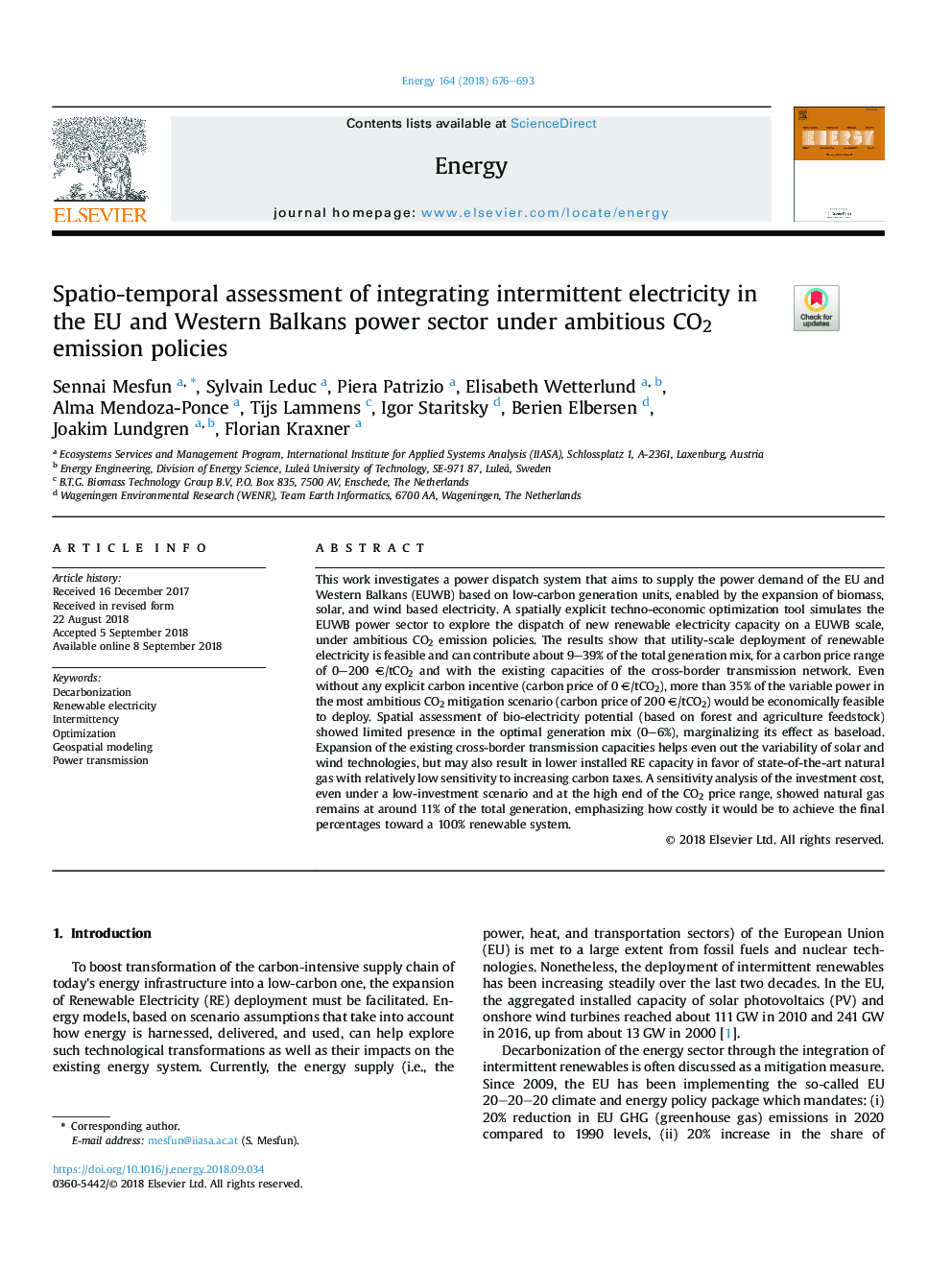| Article ID | Journal | Published Year | Pages | File Type |
|---|---|---|---|---|
| 10147882 | Energy | 2018 | 18 Pages |
Abstract
This work investigates a power dispatch system that aims to supply the power demand of the EU and Western Balkans (EUWB) based on low-carbon generation units, enabled by the expansion of biomass, solar, and wind based electricity. A spatially explicit techno-economic optimization tool simulates the EUWB power sector to explore the dispatch of new renewable electricity capacity on a EUWB scale, under ambitious CO2 emission policies. The results show that utility-scale deployment of renewable electricity is feasible and can contribute about 9-39% of the total generation mix, for a carbon price range of 0-200 â¬/tCO2 and with the existing capacities of the cross-border transmission network. Even without any explicit carbon incentive (carbon price of 0 â¬/tCO2), more than 35% of the variable power in the most ambitious CO2 mitigation scenario (carbon price of 200 â¬/tCO2) would be economically feasible to deploy. Spatial assessment of bio-electricity potential (based on forest and agriculture feedstock) showed limited presence in the optimal generation mix (0-6%), marginalizing its effect as baseload. Expansion of the existing cross-border transmission capacities helps even out the variability of solar and wind technologies, but may also result in lower installed RE capacity in favor of state-of-the-art natural gas with relatively low sensitivity to increasing carbon taxes. A sensitivity analysis of the investment cost, even under a low-investment scenario and at the high end of the CO2 price range, showed natural gas remains at around 11% of the total generation, emphasizing how costly it would be to achieve the final percentages toward a 100% renewable system.
Keywords
Related Topics
Physical Sciences and Engineering
Energy
Energy (General)
Authors
Sennai Mesfun, Sylvain Leduc, Piera Patrizio, Elisabeth Wetterlund, Alma Mendoza-Ponce, Tijs Lammens, Igor Staritsky, Berien Elbersen, Joakim Lundgren, Florian Kraxner,
